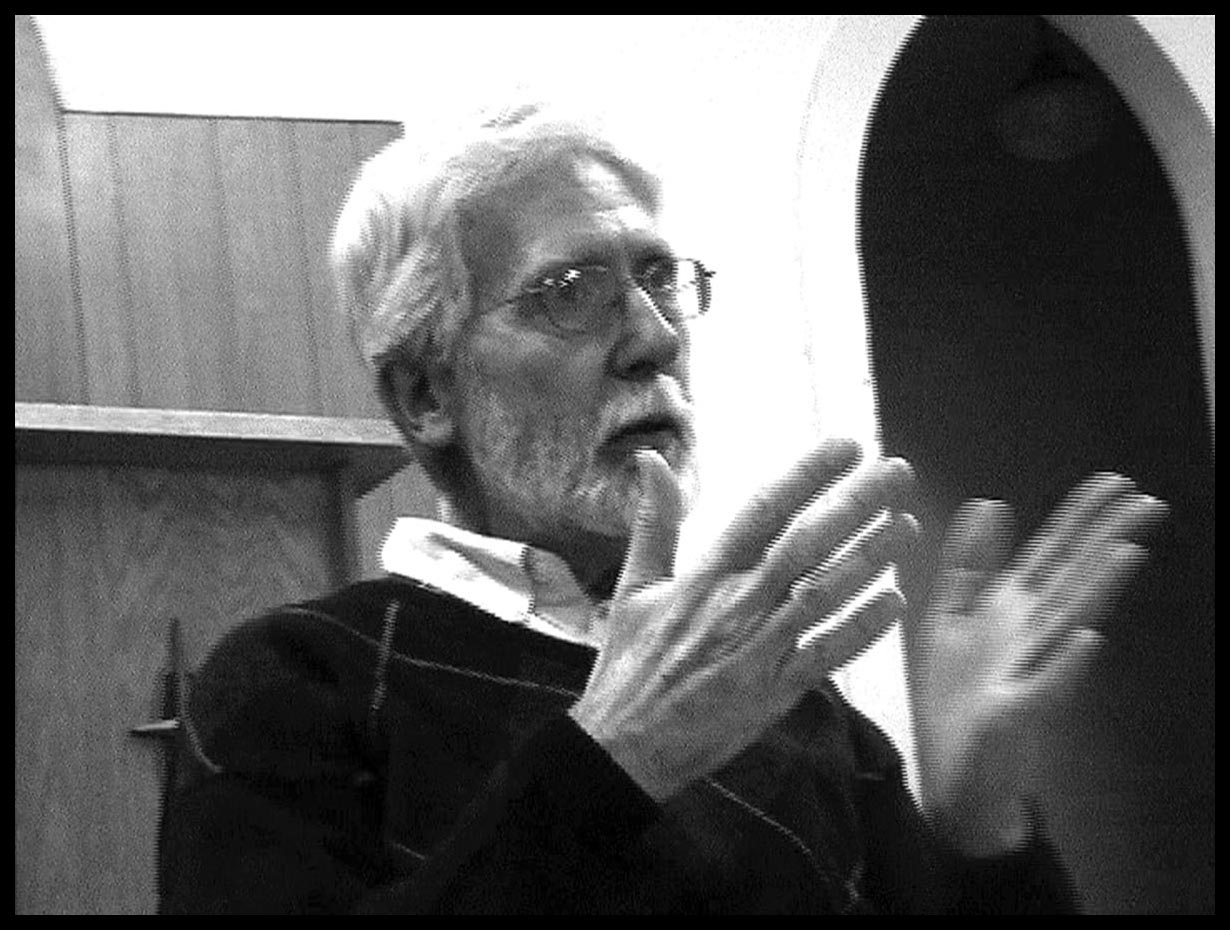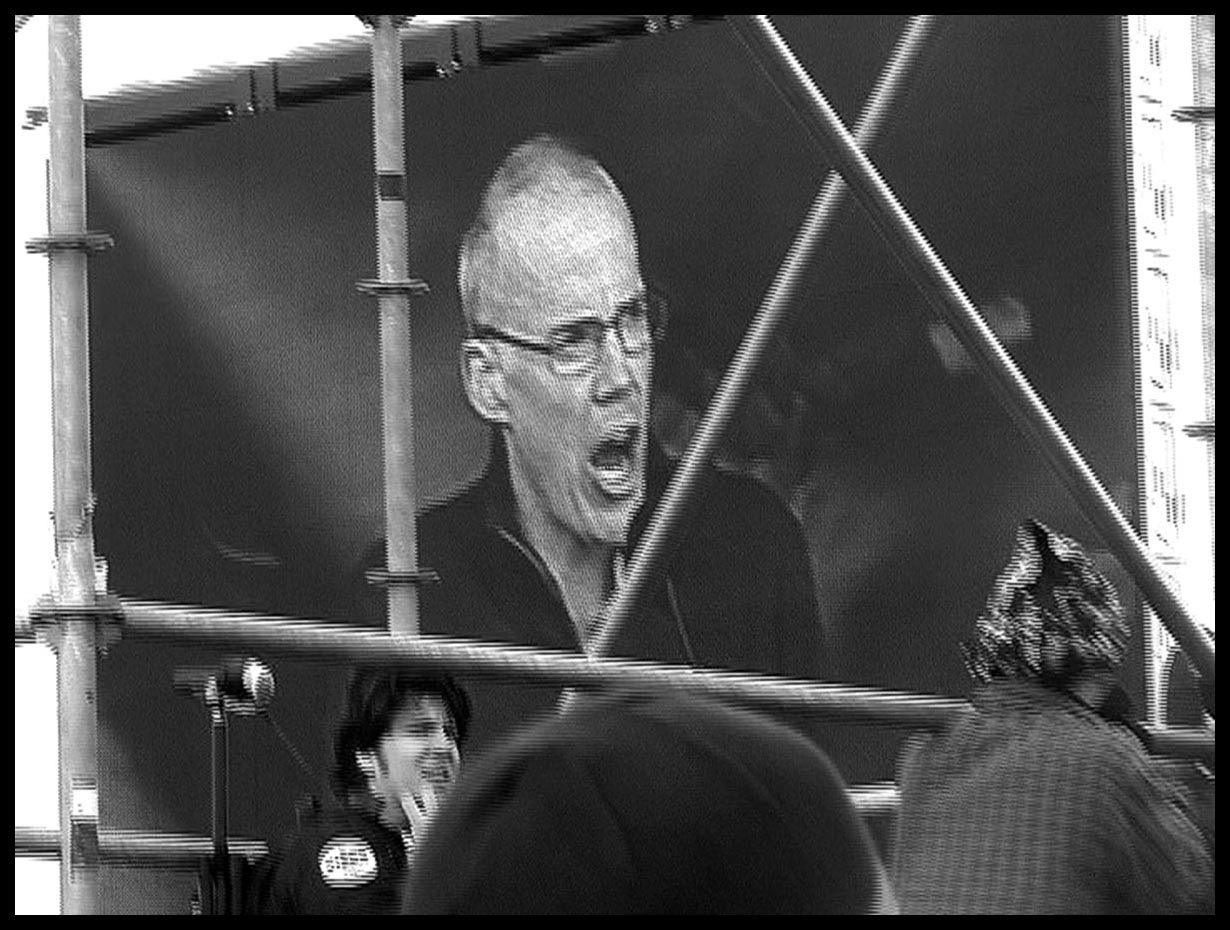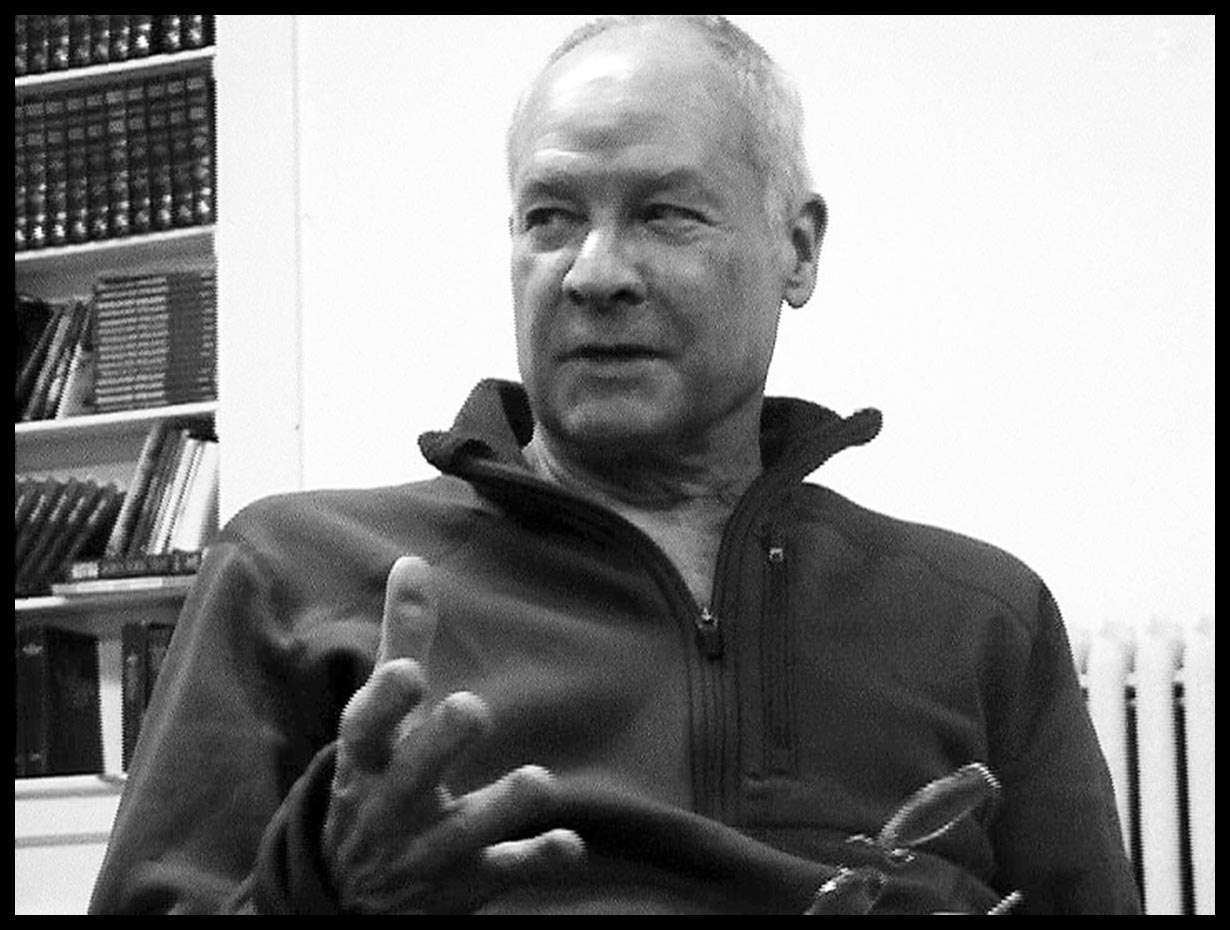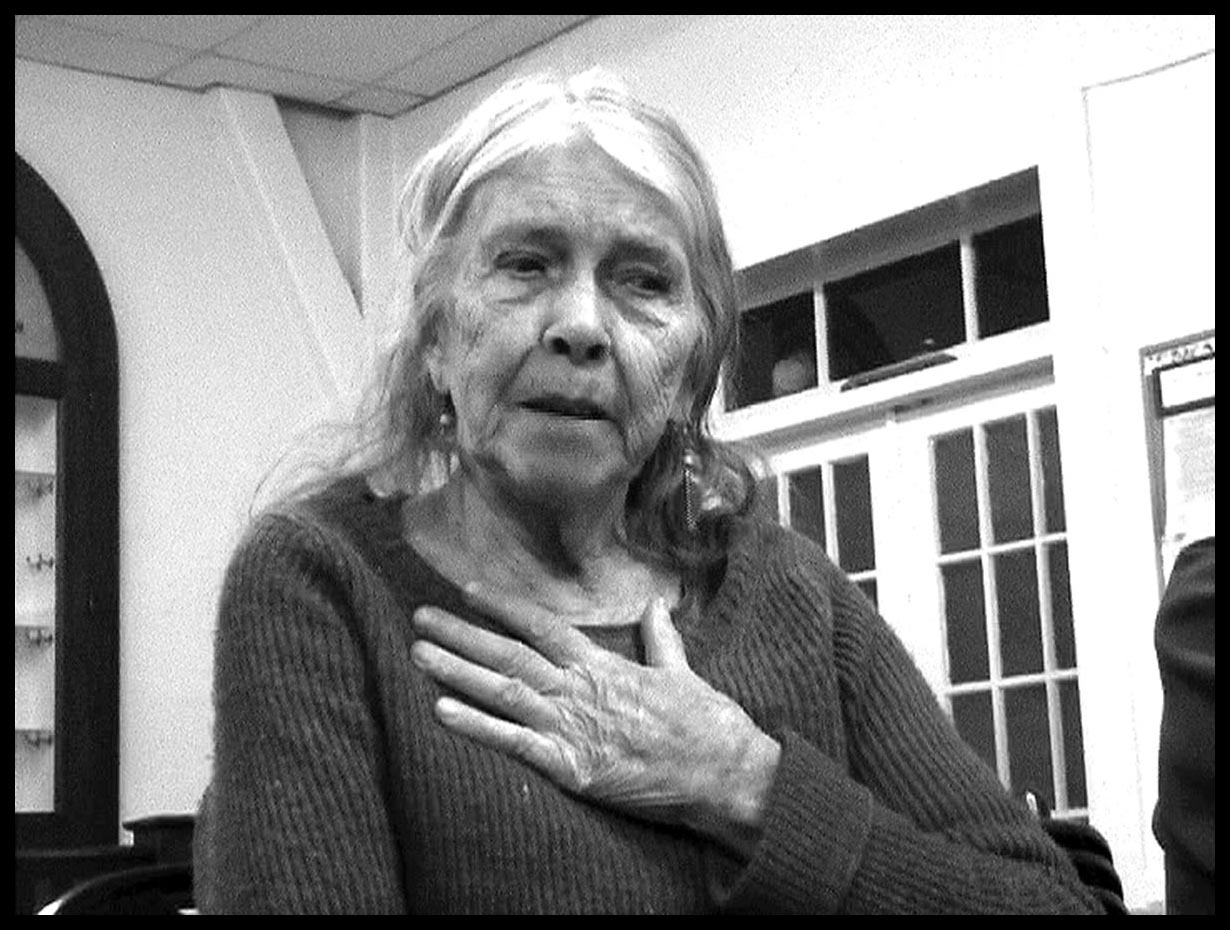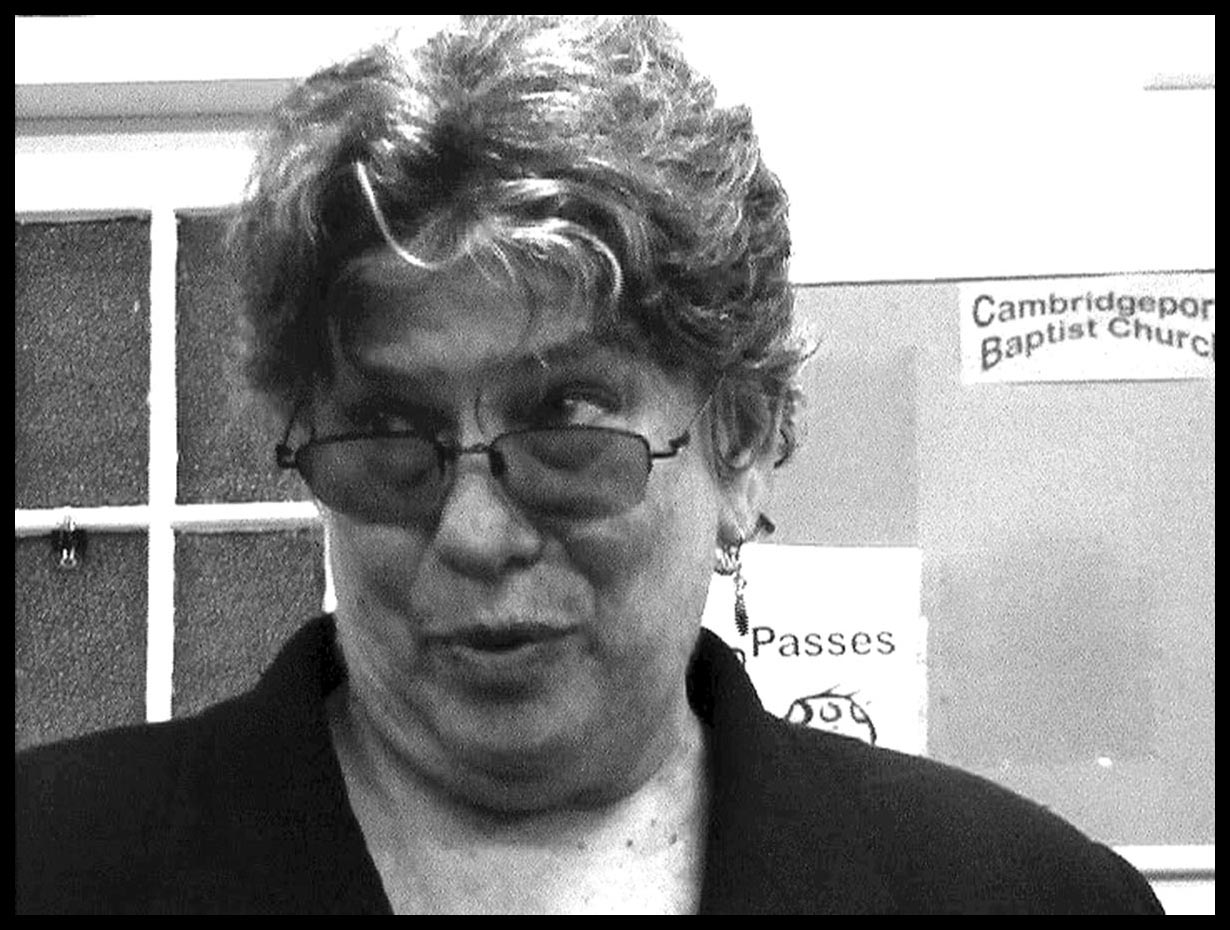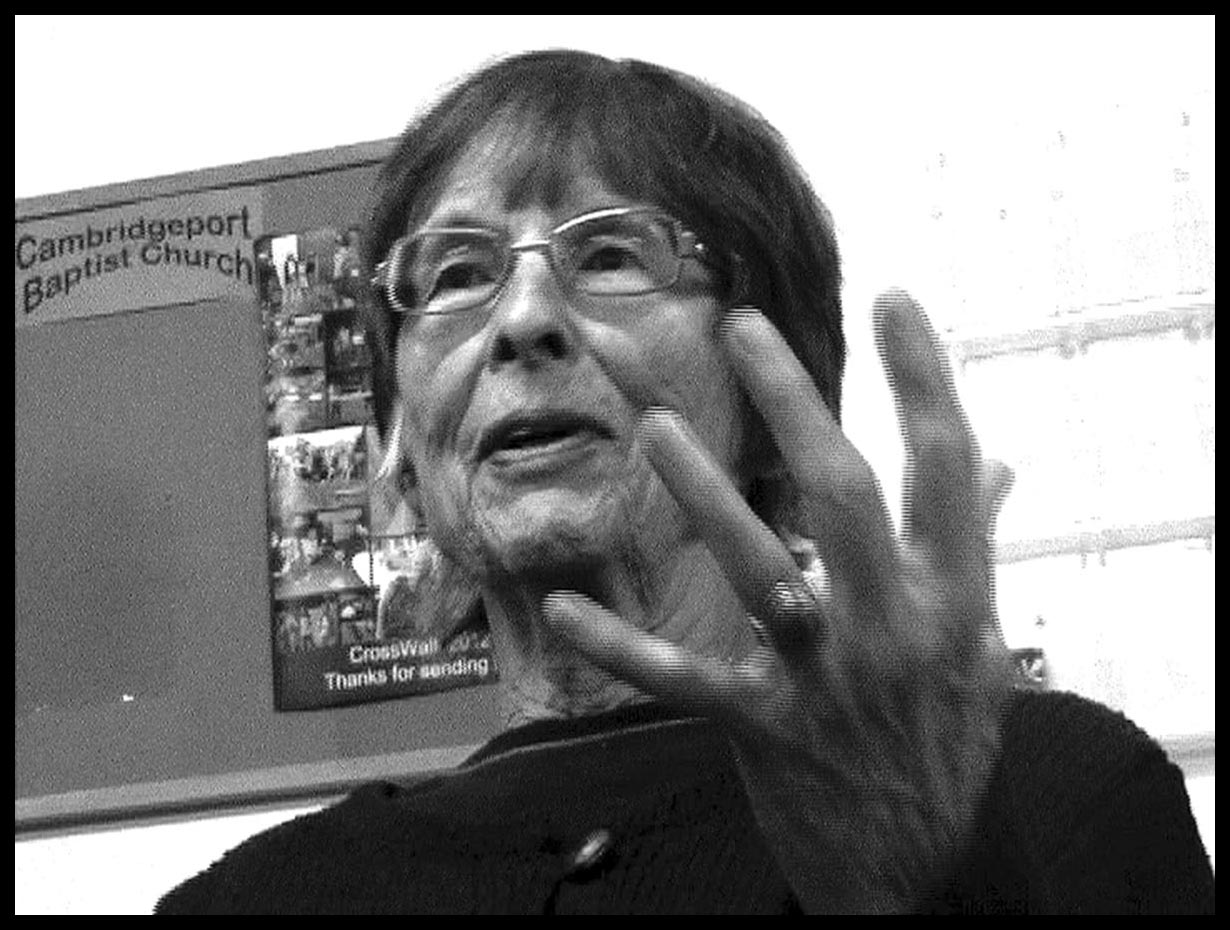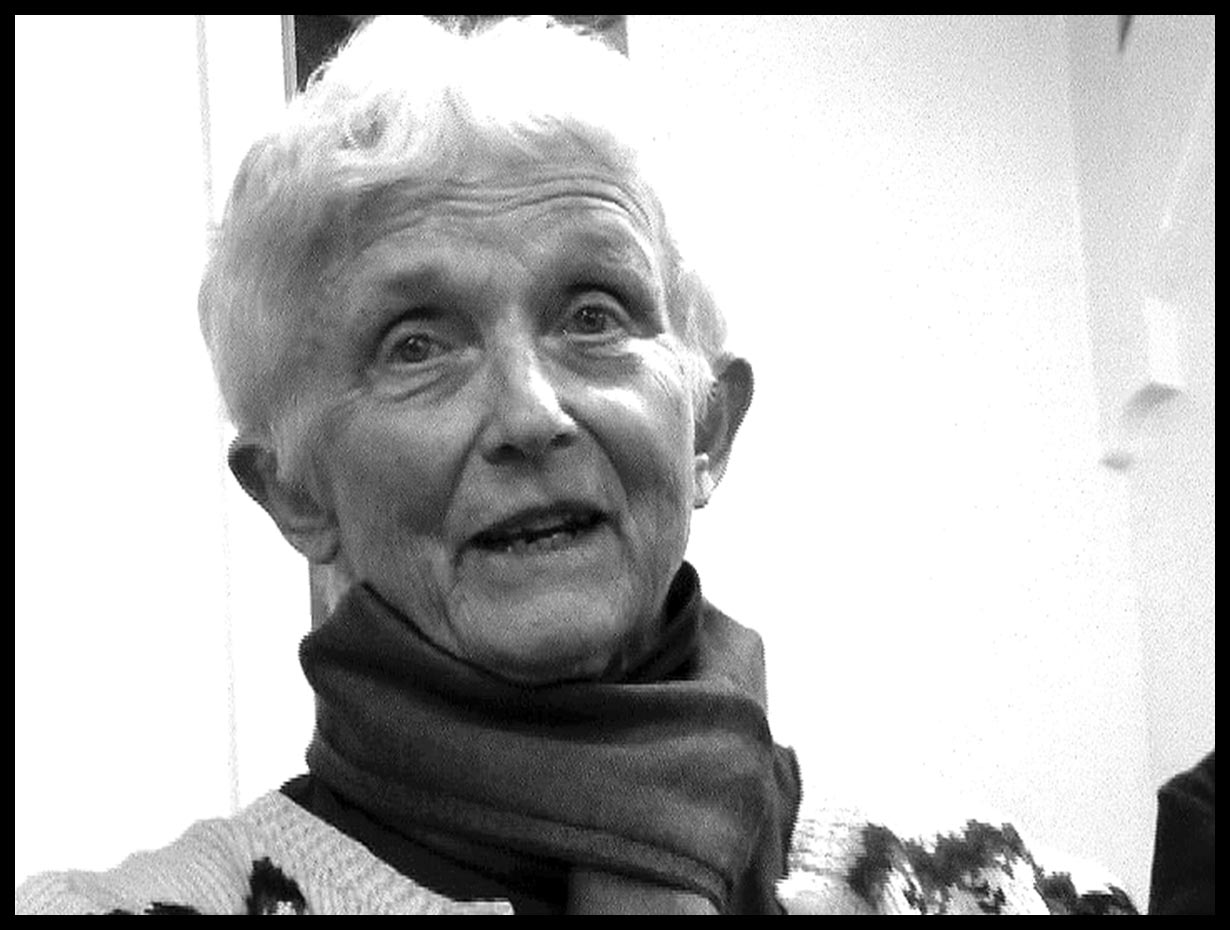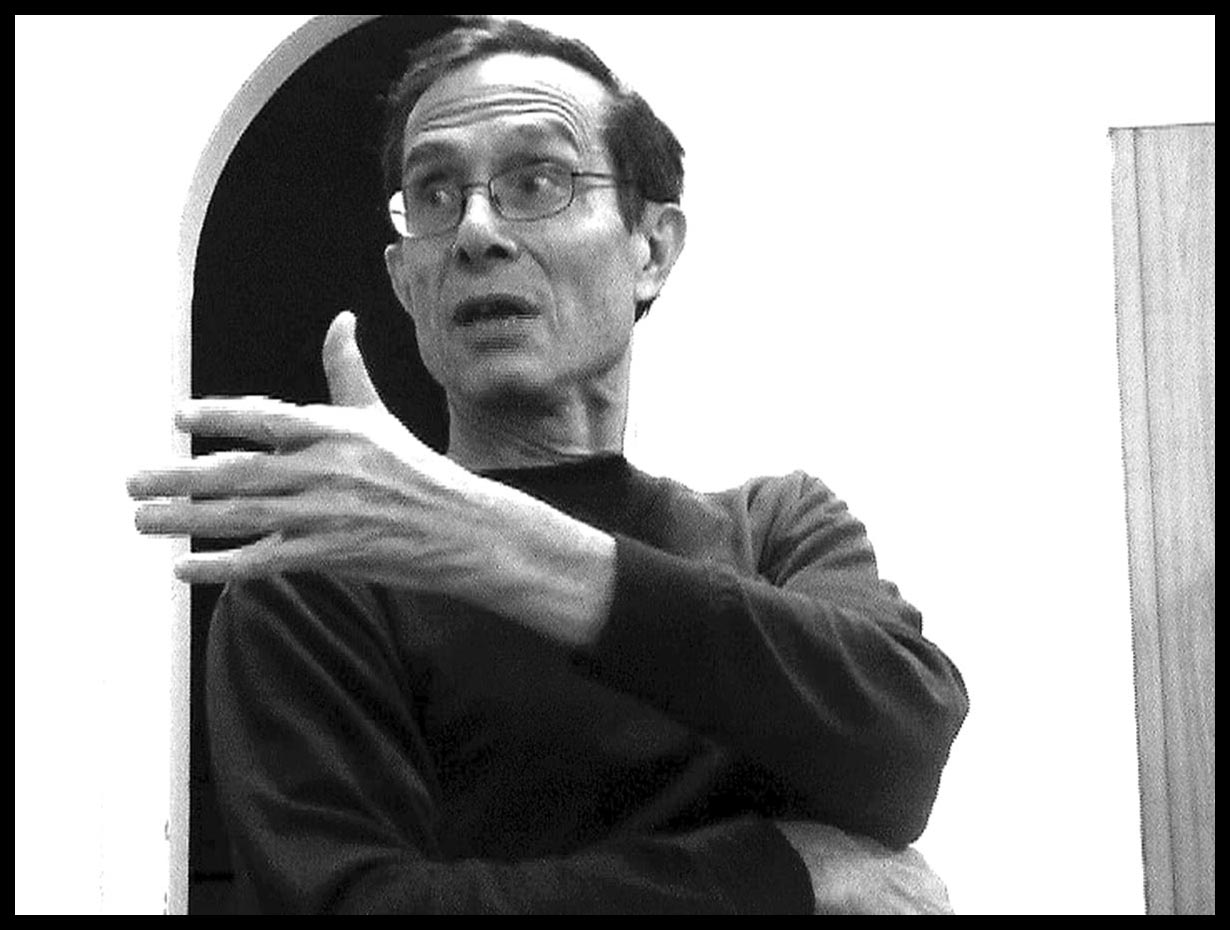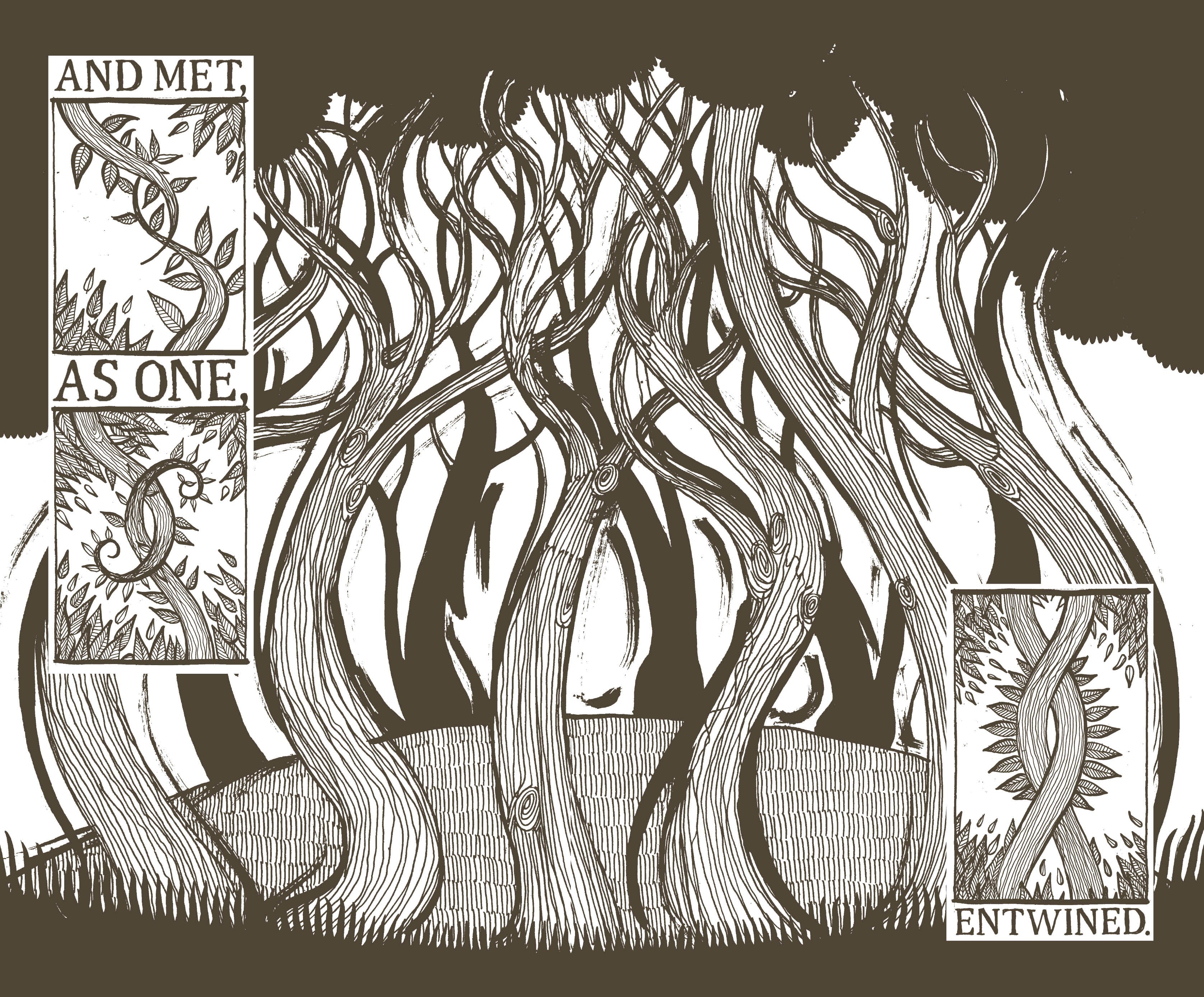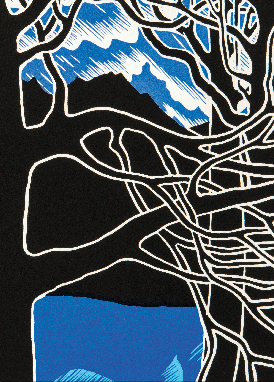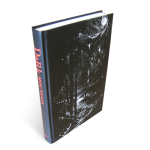In October 2012, Greenport Forum, a neighbourhood climate action group in Cambridge, Massachusetts, USA, met to discuss an essay written and distributed in advance by a member, Steve Wineman. Each activist responded in turn to the essay and to his focal question: How do you feel about what’s happening to the world?
The discussion was videotaped and transcribed by Lydia Eccles, participant-observer/test human for Universal Aliens, a transcendental phenomenological research entity that studies the human experiment.
The following is an edited transcript.
Steve Wineman: My intention is not to disparage climate activists who believe it’s still possible to avert catastrophe and are putting enormous energy into that. It’s simply to put out a different perspective. Here are some of the major things I see on the ground.
Atmospheric greenhouse gases measured by carbon are now approaching 400 ppm [As of May 2015, this benchmark has already been reached — Ed.]. The uppermost safe limit that climate scientists have identified is 350 ppm. It keeps going up. And it’s not even clear that 350 ppm is safe.
Even as carbon and greenhouse gases are going into the atmosphere, carbon sinks are shrinking. So the capacity of the earth to pull carbon back out of the atmosphere is going down.
The already-drastic climate changes we currently see are impacts of greenhouse gases in the atmosphere roughly thirty years ago — around 350 ppm. Even if we reversed direction on a dime, negative impacts on climate would continue for another thirty years. This time lag, coupled with positive feedback loops, is dire.
Arctic ice is melting. White ice reflects sunlight, dark ocean water absorbs it. The more Arctic water, the more heat you’re absorbing, which furthers warming, which furthers melting, which furthers warming. Another critical feedback loop is the thawing of permafrost, which seals in huge amounts of carbon and methane — two, three times as much as the total emitted in the last hundreds of thousands of years. Permafrost is melting. Scientific expeditions — the first in 2008 — are finding methane bubbling up in huge swaths of the Arctic. While methane has a much shorter lifespan than carbon, it is roughly twenty-five times more potent as a greenhouse gas. Feedback loops, potentially far more potent than our current emissions, also keep escalating over that period of thirty years.
This summer there was record heat, record drought and massive ongoing fires. Two thirds of this country was in drought conditions with severe impacts on food production; there are ongoing issues with growing water scarcity worldwide; and record melting of Arctic sea ice — in expanse and density; record surface ice sheet melt on Greenland. Just off the chart! If the Greenland ice sheet goes, projections in the rise of sea level are twenty feet, which clearly puts us — and many coastal areas all over the world — under water. I think that’s probably enough… [laughter] …to paint the picture, at least to my understanding, of the facts on the ground.
One thing has happened in the last — I don’t know how many — decades that has reduced carbon emissions globally: the great recession at its peak in 2009. That’s it! 2010, without even a robust economic recovery, emissions went back up 10%. For all the efforts so many of us — not just in this room, this state, this country, but globally — have been putting into fighting climate change, the only thing that has actually fought climate change effectively has been the biggest economic meltdown since the great depression. The idea that we could mount a movement to contract economies globally to fight climate change has no traction anywhere.
In my essay, I contrast constructive denial with destructive denial. Constructive denial is, in the face of terrible news, a determination to fight: Nelson Mandela in prison for twenty-seven years; people given death sentences by their doctors, who say, ‘No. That’s not my reality. And I’m going to beat this.’
In the heyday of print journalism there was an article in the Boston Globe about a guy who’d been given a death sentence by his doctor, some horrible cancer. He fought it; he took every drug, was willing to face any side effect. And he beat it. I was so moved that I cut this out and put it on my wall.
People who take that attitude now to climate catastrophe say — for everything I’ve ticked off — it’s not time to give up. Yes, it’s dire, maybe our chances are half of 1%, but if we, as climate activists, say ‘No, it’s impossible,’ we’re putting the last nail in the coffin.
The challenge I would put out to them is, absolutely! And what’s your strategy? What’s a scenario that still makes it possible? What’s a strategy that could mobilise the efforts that it would take, given the thirty-year lag, the positive feedback loops, the political climate? Help us understand how it is still possible! Constructive denial is not denial of reality. It’s a determination, given that reality, to find a way to beat it.
A few weeks after the story about the guy who beat cancer, there was a story about a woman with end-stage cancer who had made peace with death. She was getting ready to die and was just OK with it. I was so moved by that article that I cut it out and put it on the wall right next to the other one. So to frame our discussion tonight: when’s the time to keep fighting, and when’s the time to realise, fighting this is not in my interest?
What makes denial destructive? First, when we lie to ourselves. In terms of climate, saying, ‘I don’t care what all these facts are, we’ve still got to do this!’ How can you fight effectively if you’re disregarding the facts on the ground?
Second, being dishonest with others: ‘We can’t tell people how it really is — they’d get so discouraged they’d just stay home.’ In 2008 when methane was found bubbling up in the Arctic, Bill McKibben put out a mass email saying, ‘The Copenhagen conference at the end of 2009 is our last chance.’ It was a total bomb. Then he put out a piece saying, ‘If we don’t turn it around by 2012, we’re gone.’ Then Keystone was our last chance. And now fighting the oil companies is our last chance. You see what I’m saying! If the target keeps moving, the story keeps changing, you begin to feel manipulated. He’s a great guy, but he’s desperate and he’s just going to say whatever will mobilise people.
Third, depriving people of the opportunity to grieve.
How can we figure this out? When’s the time to keep fighting and when’s the time to start grieving? And if we accept catastrophe — how should we live the rest of our lives? Not only as individuals, but as a community? Because there are a lot of ways we can go down.
There are many scenarios for fighting over scarce resources, warlords, roving bands of displaced people… But there are other ways that we can go into catastrophe, if we mobilise ourselves to support each other and share resources and really, to do it right.
When I became fully aware of the horror of what we were facing, my son was in his teens. For six years I was in the place of ‘We can’t let this happen.’ We had individual clusters of successes — we got the city council to recognise climate emergency and the mayor to call a climate emergency congress — we’ve done so many great things — but emissions keep going up! When that finally moved me to say, ‘It’s not going to happen,’ I thought I was going to go into a horrible depression. And I didn’t. It was the most unexpected thing. I actually felt better. And I am not a glass half-full kind of guy. At all.
Instead I found relief. I’d been carrying this impossible burden that was lifted from my shoulders. I started grieving, which wasn’t fun, but compared to the gut-clench of ‘We’ve gotta stop this, we’ve gotta stop this, we’ve gotta stop this…’ I started finding thoughts running through my head like, ‘I don’t know what my son’s life is going to be like in thirty years, but right now he’s having a really good life.’ It focused me on making the best possible use of the present.
We’ll have a go-round focused on a simple, straightforward question: How do you feel about what’s happening to the world?
Speaker one: I’m a scholar of the deep state — the secret state-behind-the-state made up of elements within the Pentagon, the CIA and the multinational corporate elite. In the last half-dozen years the deep state has built fifteen or twenty large concentration camps in the US under FEMA’s administration.
Last year they issued the first Requests For Proposals for providing food services, supplies and all you’d need to operate a concentration camp. A law was just passed giving FEMA extraordinary powers for controlling and herding the population in the face of big, undefined disasters.
It’s my belief that the most powerful elements in the world agree completely with your remarks. And they don’t plan on sitting on their hands about it. They’re not about to institute solutions that would remove their power. But they will be perfectly willing to introduce solutions such as eliminating a third of the world’s population by untraceable diseases, or doing whatever the hell they think is necessary to save their own bacon.
Among the most powerful people on the planet, there are people drawing up contingency plans — right now! — for what they’re going to do about this global climate collapse that they think is coming. And it appears they think it’s coming in the not-too-distant future.
Speaker two: It’s like science fiction when I let my mind run to what could happen; all I can really think about is how to do things locally. I have a one-year-old grandson, and I’m concerned about his life. That’s why I came tonight, just to see what people’s ideas were. I absolutely agree, I’m sure it’s out of all our control, actually…
Speaker one: I don’t think it’s out of our control at all…
Speaker two: Well, I do. And there’s one seemingly young person here; you all may be young at heart, but… So I’m also not sure what that means. We should be the first to go, shouldn’t we? Maybe we have to embrace it even more quickly to make room.
Leo: The essay drew me into finally seeing the thing as simply just another iteration of the problem of fruit flies in a jar. Our jar happens to be the planet, and we’ve fouled it. Well gee, what would — what should — an animal do when it has fouled its habitat? Does it just do whatever it wants, which is what any other animal does? What’s the right evolutional thing to do to save the species? Do you even want to save the species? It raises very interesting questions, some of which are addressed in a certain way by the first speaker’s comments.
Speaker four: Leo and I have these conversations at breakfast almost every day. I’m more the Mrs. Half-Full and [he’s] Mr. Half-Empty. Just in that I act very locally and feel very strongly about some of the things I’m working on in a local capacity, particularly issues of access to food.
Lester: When I started with Greenport several years ago I was pessimistic about the big picture, but I felt it was important to do what we could locally; and I still feel that. It makes sense to both do all those little things to make our homes efficient, and maybe to do psychological preparation, as you talked about. Yet by my nature I tend to be optimistic, nevertheless, in the face of… whatever! Because of my engineering background, I have some optimism in solutions we maybe haven’t found yet. And human beings have a real hard time with predicting what’s going to happen in the future, so that leaves me a bit of room to be optimistic, in spite of all these difficulties.
Speaker six: When I think about how complex this is, if you look at all aspects… Wow! [laughs] I don’t even know where to start! It’s scary to be aware of that; to feel I will never really understand this, grasp this… I do think it’s very important to work at the local level, still. Even if I don’t think we can avoid the biggest problems to come.
Rosalie: I’m not sure there are a lot of activists who still believe we can avert catastrophe. There’s this ‘How huge will the catastrophe be?’ kind-of-thing, and a lot of the so-called mitigation efforts are related to trying to lessen the catastrophe, not deny it.
It’s extremely important that we get in touch with our feelings. I’ve been focusing on providing opportunities for people to get together to mourn and express anger and let those feelings come out in a group situation; to breath through those into coming up with action based on reality. It’s related to the Buddhist model: take in sorrows and let them pass through you. That’s a healthy way to deal with it psychologically.
Because it is going to be really hard. Yeah, this is big, and it’s coming. The US Military thinks this is the biggest threat we face!
Sue: I never considered myself an activist and I never thought it was going make a big difference, so I’m not that cast down. However, I think the mitigation is really important. Because if you accept it’s going to happen, or is happening, then mitigation is vital to… make it better. And who knows what might be discovered? I’ve read far-out news articles about people thinking they’re going to reverse this by putting things in the ocean to sop up the carbon and stuff like that. It’s not like I think that’s really going to do it, but it’s not like I think it absolutely won’t do it either.
I don’t know where the neighbourhood comes in on this. It seems like a really global thing, and I just don’t know what a neighbourhood is going to do — besides come together to help each other — yes. But to do that in any circumstance; it wouldn’t just be around climate change.
Paul: One possibility is that there will be these positive feedback tipping points, but it’s also possible that we’ll get to a tipping point in public opinion, where it’s strong enough to cause effective political action. There’ll be a series of tactics to try and deal with this as the situation deteriorates. A lot of people are never going to give up, even when things seem irreversible. Drastic strategies! People will be working on drastic strategies, like the one you mentioned about the oceans. These could be done by a nation — China could do it — and even if other nations disagree, these solutions would still be tried. So it becomes very complicated.
But a lot of mitigation strategies are the same strategies we’d use to delay catastrophe, because that would give us more time to adapt — renewables, photovoltaics, things like that — and if done widely enough, might even avert it.
Sarah: Historically I’ve been very discouraged about climate change. Your essay, Steve, made me start thinking about it in a different way. We’re building an energy efficient house out in the Berkshires; it will be net zero. And we’re getting a generator. Part of me resisted that. But when you have a well, if you don’t have electricity you have no water… except what happens to be in the pressure tank at the point when the electricity goes out. I didn’t want to have to worry about that.
We were driving around one night while electricity was out there, and only one house in the neighbourhood was lighted up — they must have a generator. I realised, if electricity went out for an extended time, if things start falling apart, we would have water… and that was something we could share. And I need to find more things like that.
Joanna: For four years I focused on the coming climate change and then backed off from that; because what seems most important is to change the way people take responsibility for how things are working — the economy, the government. I don’t see much change happening in this country until we have a sort of a people’s revolution.
I’ve been working with the Green Rainbow Party. I don’t think the program our presidential candidate has, Green New Deal, is going to make a huge difference, but we also have ideas about localisation and people taking control of things themselves, delegating the government to do what they want it to do.
The thing in general is sad. But my actions no longer much relate to it.
Janet: We just moved and we’re really near the river. [laughter] And what can I do about that? Also I just came back from visiting my grandchild in California, who’s six. How to think about the world and the future with her in it? Is there going to be a future for her?
And not being able to talk — really — about what we’re all talking about, because I’m not sure how much the parents want to talk about things like that when they’re bringing up a little girl.
I wish our national leaders would realise they need to say something — publicly — because if they did people would mobilise. Like they did in the early seventies about the fuel shortage, when Nixon said, ‘I want everybody to carpool.’ My remembrance is that everybody tried to do that. So I bemoan the fact that hasn’t happened.
Ellen: I refer to the first speaker here, about ominous schemes that are in process for troubles… national and local troubles, municipal troubles, national security taking over. Boston is advancing quickly on its adaptation studies and Cambridge has one ready for 2015. Unless we do the neighbourhood work, unless we are very bonded — calling it neighbourhood or just calling it enclaves of people who have a lot in common — national security will determine our future when we begin to have collapses and shortages. I don’t see our cities and towns coming up to the bat as they should.
We had a wonderful Cambridge Climate Conference that did not go anywhere. Still maybe we can have another one, now that we’ve come further along and realised limitations in how much we can change things. We have Hansen, the whole scientific community, now on board as to where we are headed. It’s still worth struggling, but that neighbourhood common group thing is absolutely going to be essential.
I recommend Norman Spinrad’s Greenhouse Summer. Talks about some of the things that have come to pass now? And it’s now not so much science fiction.
Bette: What we’re doing is radical in American culture, which forces us to always be upbeat. To actually be able to come out — come out! …interesting choice of words — is very liberating, because otherwise we’re forced to continually — at least I have felt forced to keep all this to myself.
In my regular life I’m not in a situation to introduce this topic to people. If there were a couple of us chatting, it’s just totally — you don’t want to mention it! Barbara Ehrenreich wrote a book called Bright Sided. She tears apart the American culture of happiness and denial of anything unpleasant. To actually be able to sit together and deal with something unpleasant is a good place to start — and very supportive. I hope this is the beginning of a new grasp of reality.
Carolyn: There’s this wonderful effort on the community level, Cambridgeport. What’s the bigger picture? Since the presidential candidates have not dared mention the environment, and many conservatives deny that there is a problem? How are the people in this room connected to a larger, nationwide effort? Is there even a statewide effort of groups such as this? What kind of action is going to come out of a group like this, other than just telling our feelings?
I’m a person who likes to see some kind of an action plan, measurable objectives and a progression of some kind. It needs to be in the spotlight, on a national level, in a big way.
Polly: I appreciate everyone who’s come and shared their vision. It’s way too scary, this topic, to think cogently by ourselves. I can’t do it. I dare to hope that with a group like this and the connections we already have, we can discover ways a growing band of people can have the safety to actually face this. Then be open to the real mitigations that can happen.
Adam: What’s helped me is studying anthropology and the history of civilisations and how people have reacted to their varying human conditions. We’re perfectly capable of predicting what’s coming, because the pattern is consistent. Civilisations have always collapsed. They may have felt invulnerable up to that point, full of hubris and fascination with their own power; but it’s really laws of nature that say what you can do, where, and when.
Ecological overshoot is a common human condition; cultures large and small have done it. They’ve exceeded the capacity of the world that they’re in — their habitat — to support them. Then things fall apart. It happens over and over again. It’s a predictable pattern.
We aren’t in any way any different about that. Technology is, as far as I can tell, mostly fluff. It is part of the problem. Global warming is a technological phenomenon. And we’re stuck in it.
I take comfort in knowing everybody’s been through this. Cultures have collapsed. Some have had a great time on the way, but that’s the way life on earth is. I thank my billions of forebears for paving the way; and I’m part of that family.
John: People’s inability to deal with the emotional aspects of what climate change means is an important phenomenon. In public, you bring it up and people wince — not because they deny, but because you hit a nerve. I feel a responsibility — because I have grandchildren, or just as the kind of person I am — to do as much as I can to mitigate before I die.
But… what is that, that I do? I think — I wonder and I almost believe — that emotional connections are the most powerful way we can influence people. Where there are these deep emotions, if we don’t figure out how to use them to reach others, we’re missing an opportunity. A conversation with a daughter who’s just had a child — that’s the most difficult conversation I can imagine having. With two daughters who just had children, I think about this!
There are positive ways to tap our emotions, not just simply make people give up. Part of it is the belief that useful things can be done. Resolve — that’s something we can build together. That might be comforting to people, to see that there are others who are resolved to do what they can.
The fighting we’ve thought of has been associated with anger — being mad at the oil companies, mad at this person, mad at that. But there’s another aspect of fighting and that’s courage. When you’re afraid — historically and in many situations — the only way you can act is to have courage. Perhaps we can think how to cultivate courage; collectively or individually.
Randy: I’m 100% convinced that Steve is right about the direction things are going, in the short term. But I’m a person who tends to see the glass half-full, and I’m an engineer. Climate change is happening, things are going to get bad, but in a fluctuation way. It’s not going to go off a cliff immediately. It’s going to get bad, then a little better, then worse, then a little better.
I’m hoping the world will respond to one of the first bad things that happens; that we can switch away from these climate-intensive fuels to renewables. But it’s going to take a tragedy before people will wake up — an economic tragedy or a human tragedy. That will cause a reaction in the world.
It’s important to continue to act now, locally, to be in the vanguard for when the rest of the world is willing to follow. Which they’re not at right now.
Steve Wineman: [reading his essay’s epigraph]
Logic and sermons never convince.
The damp of night drives deeper into my soul.
(Only what proves itself to every man and woman is so. Only what nobody denies is so. )—Walt Whitman, Leaves of Grass (1855)
—
Steve Wineman is a writer, retired mental health worker, and a long-time social change activist. In 2006 he co-founded GreenPort, a climate action group in the Cambridgeport neighbourhood of Cambridge, Massachusetts, USA. After distributing his essay, Crossing the Chasm: From Denial to Acceptance of Climate Catastrophe, he received numerous requests for a public discussion of the ideas in the essay. In response, GreenPort held a forum on October 16, 2012 titled ‘Climate Catastrophe: Let’s Talk About It.’ Contact: steven.wineman@gmail.com
Lydia Eccles videotaped/edited the GreenPort conversation to create a booklet and 30-minute video entitled ACTIVISTS: what the hell do we do? She is test human/participant observer for Universal Aliens, a transcendental phenomenological research entity. Her recent documentary, COLLAPSE INTERVIEWS: A Gathering of People With Nothing In Common (2013, 127 min.) features interviews with non-activists as part of the UA Collapse Studies inquiry, ‘What is the human experience of living against an evolving backdrop of warnings of impending catastrophe?’
To contact or request DVDs, email universalaliens@hotmail.com

